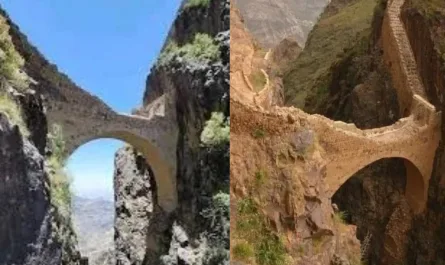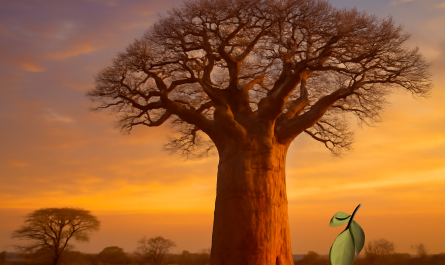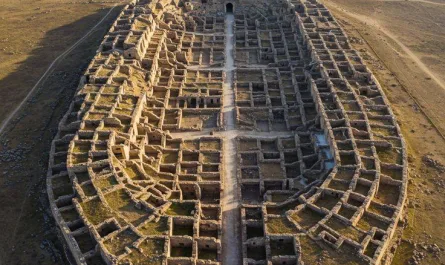Nestled on the Mississippi River floodplain opposite St. Louis, Missouri, near the towns of Cahokia and Collinsville in southwestern Illinois, lies the remarkable Cahokia Mounds. This archaeological site, sprawling across 5 square miles (13 square km), is a testament to the sophistication of the Middle Mississippian culture. Once home to as many as 120 earthen mounds, the site has lost some of its ancient features to time and development, but approximately 70 mounds remain preserved within the 3.4-square-mile (8.9 square km) Cahokia Mounds State Historic Site. Established in 1979 and recognized as a UNESCO World Heritage site in 1982, Cahokia offers a window into a vibrant prehistoric urban center that thrived from around 950 to 1350 CE.
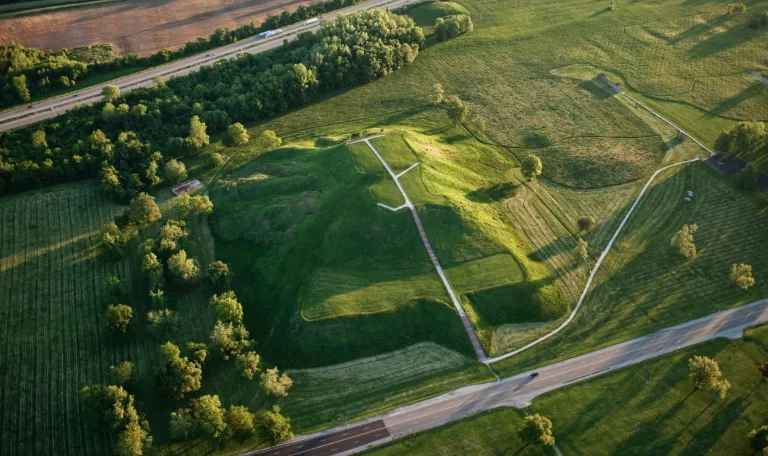
The Rise of Cahokia
First occupied around 700 CE, Cahokia reached its peak between 950 and 1350 CE, with a population estimated at 8,000 to 20,000—possibly as high as 40,000—making it the largest urban center in prehistoric North America north of Mexico. Named “Cahokia” (meaning “Wild Geese”) after an 18th-century Illinois tribe, the city was a hub of the Middle Mississippian culture, known for its advanced social organization and intensive agriculture centered on corn (maize).

The city’s layout was meticulously planned, with distinct zones for governance, ceremonies, elite residences, and common neighborhoods, all aligned with the cardinal directions. At its heart lay a vast 40-acre (16-hectare) central plaza, surrounded by monumental earthworks. The most iconic of these is Monks Mound, the largest prehistoric earthen structure in the Western Hemisphere. Built between 900 and 1200 CE, this pyramidal mound towers 100 feet (30 meters) high, covers over 14 acres (6 hectares), and contains more than 25 million cubic feet (700,000 cubic meters) of earth. Likely the seat of Cahokia’s leadership, Monks Mound supported a large structure—approximately 100 feet long, 50 feet wide, and 50 feet tall—used for governance or ceremonies.
A Hub of Trade and Agriculture
Cahokia’s strategic location along a major Mississippi River tributary provided access to diverse ecosystems, including marshes and open waters rich with fish, the primary protein source for its people. The fertile floodplain and nearby alluvial fans supported expansive corn fields, while smaller multicrop gardens and house plots within the city thrived on enriched soils. This mixed agricultural system sustained Cahokia’s dense population, though it eventually strained the region’s resources.
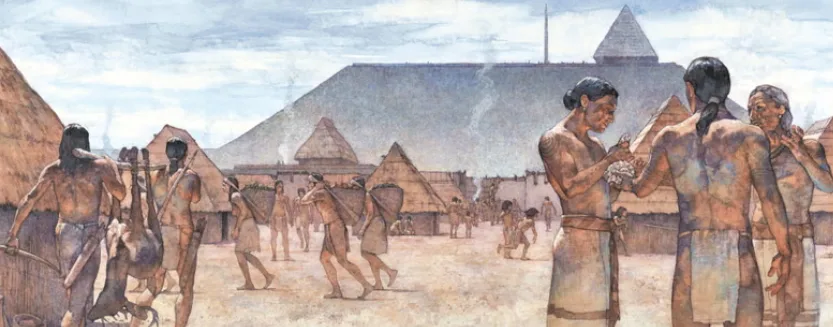
Archaeological evidence reveals Cahokia’s extensive trade networks, reaching from the Gulf of Mexico to the Appalachians, Great Lakes, and Rocky Mountains. Artifacts such as shells, copper, and stone tools indicate the city’s role as a commercial and cultural crossroads. Skilled artisans crafted intricate items, including copper ornaments, shell beads, and effigy pottery, often featuring motifs like feathered serpents, winged warriors, and geometric designs.
The Decline of a Great City
Cahokia’s decline, beginning around 1350 CE, was likely driven by environmental degradation. The city’s reliance on wood for fuel and construction led to deforestation, increasing runoff and erosion that caused unseasonable flooding in agricultural fields. Crop failures likely triggered economic hardship, starvation, and social unrest. Other potential factors include disease, climate shifts, and warfare. As tensions rose, residents built palisaded wooden fortifications, a sign of external threats. Over time, the city was abandoned, with its people dispersing to the east, south, and west, likely integrating with other Native American groups.
The Mississippian Culture
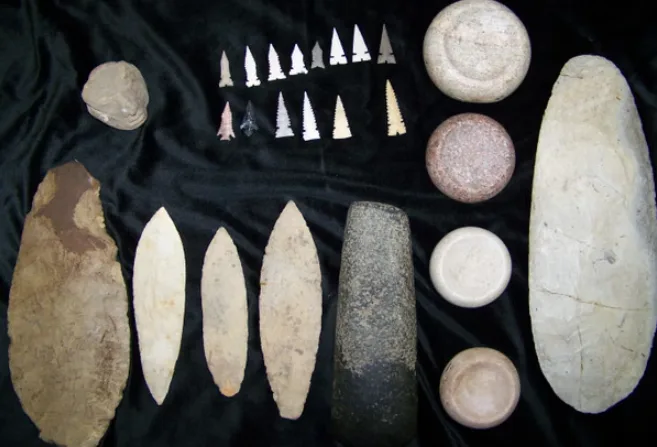
Cahokia was the pinnacle of the Mississippian culture, which flourished from 700 CE until European contact. Spanning the Southeast and Midwest, this culture relied on intensive farming of corn, beans, and squash, supporting large populations in river valley towns. Each major settlement, like Cahokia, was a theocratic village-state, led by priest-rulers and centered around a ceremonial plaza with pyramidal mounds for temples or elite residences. Mississippian artisans produced elaborate crafts in copper, shell, and clay, featuring symbolic designs. By the time European explorers arrived, the culture was in decline, though descendants like the Natchez persisted into the modern era.
Exploring Cahokia Today
Since the late 19th century, archaeologists have studied Cahokia, though only a small fraction of the site has been excavated. Researchers continue to investigate the mounds’ construction, the city’s social structure, and its interactions with surrounding communities. An interpretive center at the site features a reconstructed village and educational exhibits, bringing Cahokia’s story to life. Preservation efforts focus on protecting the mounds from erosion, particularly Monks Mound, which has faced significant slope failures since the 1980s, and expanding the historic site’s boundaries.
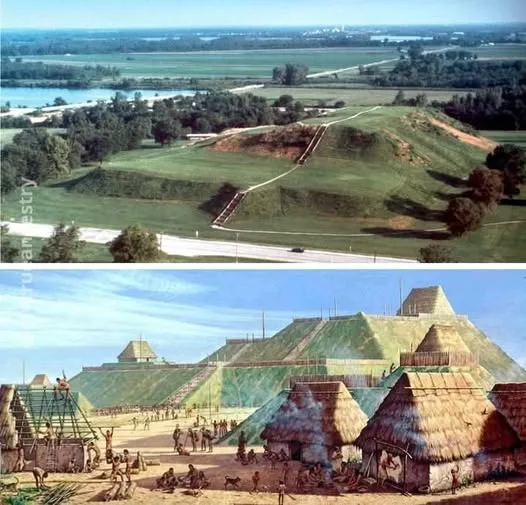
Cahokia Mounds stands as a remarkable reminder of the ingenuity and complexity of ancient North American societies. Its monumental earthworks, sophisticated urban planning, and vibrant culture continue to captivate visitors and scholars alike, preserving the legacy of a lost metropolis.
